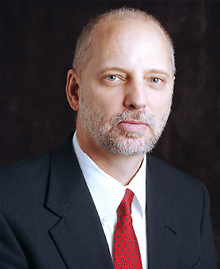Call it “death with dignity” or “physician-prescribed suicide” or “physician assistance with dying,” but legally permitting physicians to prescribe medications to help terminally ill patients end their lives represents conflicting ideals for the medical profession.
That may be especially true for psychiatrists, who under some proposed legislation might be called upon to determine a patient’s competence to request such a mode of death, said New York forensic psychiatrist Steven Kenny Hoge, M.D., chair of APA’s Council on Psychiatry and Law.
Hoge chaired a joint information-gathering meeting along with APA’s Committee on Judicial Action on physician-assisted dying, at APA’s September component meetings.
When is it permissible for a physician to help a patient die?
The question reached a new watershed in California, where on October 5, Gov. Jerry Brown signed into law The End of Life Option Act, permitting physicians, under certain conditions, to prescribe (but not administer) medications that a patient determined to be terminally ill can take to end his or her life.
California now joins Oregon, Washington state, Montana, and Vermont in allowing terminally ill patients with competence and decisional capacity to request assisted dying.
The legislation was opposed by some medical groups. The American College of Physicians (ACP) wrote to Gov. Brown in September urging him to veto the bill.
“The physician must act in the best interests of the patient as a healer, comforter, and trusted advisor,” said the ACP statement. “Physician-assisted suicide undermines trust in physician-patient relationships and trust in the profession of medicine.”
APA has no formal policy on the issue now but has received requests for information and support from members.
“District branches and state associations need information about these important issues,” said Hoge. “What are the relevant issues for psychiatrists? What should legislation include as safeguards regarding the decision-making capacity of the patient?”
Generally, in cases in which a patient’s ability to make decisions is questioned, a judicial process provides a context for the psychiatrist’s assessment and serves as society’s safeguard for the individual.
“However, in physician-assisted dying, what is the appropriate safeguard to affirm that capacity is present?” said Hoge. “Should one psychiatrist’s opinion be enough? Two? A panel? Should there be specific training regarding assessment of capacity?”
The September meeting was aimed at learning more about those issues from several experts.
Most research on physician-assisted dying has taken place in Oregon, where the practice has been legal for two decades, Dan Larriviere, M.D., J.D., vice chair of neurology at the Ochsner Neuroscience Institute in New Orleans, told the attendees. The American Academy of Neurology has stated that the practice may be legal but was nevertheless unethical.
Larriviere noted that conflicting principles were involved: patient autonomy versus nonmaleficence, the physician’s role in safeguarding life versus the need to relieve suffering. Since 1997, 1,050 patients in Oregon have been prescribed lethal drugs, and 673 have used them to die.
The Oregon patients’ median age was 69 years, he said. “They were well educated, were in hospice, and had insurance. Cancer and ALS were the most common diagnoses. Hopelessness was common but not major depression.”
Avoiding pain proved a lesser issue at the time of request, said Linda Ganzini, M.D., M.P.H., a professor of psychiatry and medicine at Oregon Health and Science University in Portland, who studied 58 requesting patients. They were mostly nonreligious, white and well educated, and did not have depression, untreated symptoms, or socioeconomic disadvantage. They were not a “burden” on their families, one of the common arguments made in favor of physician-assisted dying.
“But they worried about future pain and how pain would undermine their sense of control and autonomy,” said Ganzini. “It’s not current but future symptoms or quality of life that concerns them.”
The individual’s mental state is another potential cause for concern.
“In some jurisdictions [like Oregon], treating physicians are not required to refer their patients for a competence assessment,” noted Hoge. Only a minority of requesting patients in Oregon receive a psychiatric evaluation, for example. “Should they be required to have an independent evaluation by a psychiatrist?”
No state now requires a psychiatrist to render judgment on a patient’s capacity to decide about requesting physician-assisted dying. However, without a capacity-compromising diagnosis present, “there is no clinical reason to question capacity,” said Robert Roca, M.D., M.P.H., of Baltimore’s Sheppard Pratt Health System.
More ambivalent cases call for evaluating the consequences of the choice and raising the standard for determining capacity, said Roca. “These are complex assessments and judgments, requiring knowledge and experience in psychiatry.”
This is especially the case for people who are not “terminally ill” in the conventional sense but may have serious psychiatric conditions, like personality disorders or depression.
“Patients with depression should be identified and treated prior to making a decision about physician-assisted dying,” said Hoge. “The issue of depression overlaps to some degree with competence, but many depressed patients would be assessed as having capacity under usual standards.”
Whether or not organized psychiatry should support legislation authorizing physician-assisted dying, even if ideally crafted, is a key question, said Hoge. “If psychiatrists take on this role, do they not then become the gatekeepers to death? Is this the correct role for us?”
APA will not immediately develop a position statement for or against physician-assisted dying, said APA President Renée Binder, M.D., at the meeting. “However, we should continue to gather and present evidence to our members.” ■
The American College of Physicians letter to California Gov. Jerry Brown can be accessed
here.

